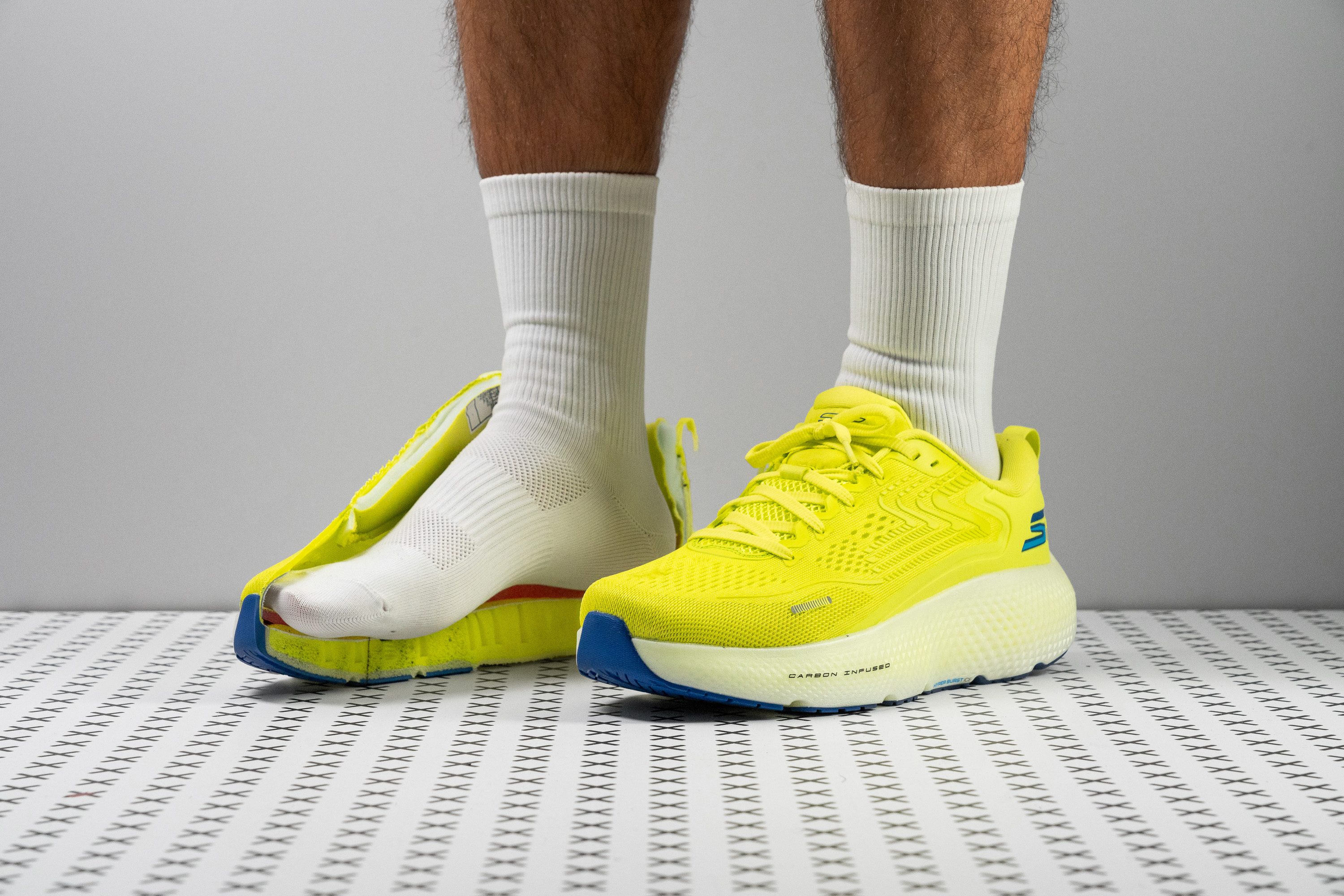Our verdict
- Top pick in best Skechers running shoes
Pros
- Maximalist yet affordable
- Durable, grippy Goodyear outsole
- Plush upper
- Machine washable for convenience
- Doubles as a walking shoe
- Fantastic at easy paces
- Rocker-enhanced transitions
- CO2-infused midsole
Cons
- Noticeably heavy
- Struggles at faster paces
- Lacks energy return
Audience verdict
- Top 8% in road running shoes
- Top 7% in neutral running shoes
Comparison
The most similar running shoes compared
+ + Add a shoe | |||||
|---|---|---|---|---|---|
| Audience score | 91 Superb! | 86 Good! | 89 Great! | 84 Good! | |
| Price | £150 | £185 | £200 | £200 | |
| Pace | Daily running | Daily runningTempo | Daily runningTempo | Daily running | |
| Shock absorption | - | High | Moderate | - | |
| Energy return | - | High | High | - | |
| Traction | - | High | High | - | |
| Arch support | Neutral | Neutral | Neutral | Neutral | |
| Weight lab Weight brand | 11.3 oz / 319g 11 oz / 312g | 11.1 oz / 315g 10.8 oz / 306g | 9.9 oz / 281g 9.5 oz / 269g | 9.7 oz / 274g 8.8 oz / 250g | |
| Drop lab Drop brand | 8.1 mm 6.0 mm | 9.2 mm 5.0 mm | 10.3 mm 8.0 mm | 9.4 mm 5.0 mm | |
| Strike pattern | HeelMid/forefoot | HeelMid/forefoot | Heel | HeelMid/forefoot | |
| Size | True to size | True to size | True to size | True to size | |
| Midsole softness | Soft | Soft | Balanced | Balanced | |
| Difference in midsole softness in cold | Big | Small | Small | Small | |
| Toebox durability | Decent | Good | Good | Bad | |
| Heel padding durability | Good | Good | Good | Bad | |
| Outsole durability | Good | Good | Good | Good | |
| Breathability | Moderate | Breathable | Warm | Breathable | |
| Width / fit | Medium | Narrow | Medium | Medium | |
| Toebox width | Narrow | Narrow | Narrow | Medium | |
| Stiffness | Stiff | Stiff | Stiff | Stiff | |
| Torsional rigidity | Moderate | Stiff | Stiff | Stiff | |
| Heel counter stiffness | Moderate | Stiff | Moderate | Stiff | |
| Plate | Carbon plate | Carbon plate | Carbon plate | Carbon plate | |
| Rocker | ✗ | ✓ | ✓ | ✓ | |
| Heel lab Heel brand | 39.7 mm 40.0 mm | 46.3 mm 49.0 mm | 45.6 mm 42.0 mm | 40.2 mm 35.0 mm | |
| Forefoot lab Forefoot brand | 31.6 mm 34.0 mm | 37.1 mm 44.0 mm | 35.3 mm 34.0 mm | 30.8 mm 30.0 mm | |
| Widths available | Normal | Normal | NormalWide | NormalWide | |
| Orthotic friendly | ✓ | ✓ | ✓ | ✓ | |
| Season | All seasons | SummerAll seasons | All seasons | SummerAll seasons | |
| Removable insole | ✓ | ✓ | ✓ | ✓ | |
| Ranking | #22 Top 6% | #169 Top 46% | #78 Top 22% | #231 Bottom 37% | |
| Popularity | #147 Top 40% | #63 Top 18% | #215 Bottom 41% | #246 Bottom 33% |
Who should buy
We enjoyed testing the Skechers GO RUN Max Road 6 and believe it’s a great running shoe for:
- Runners looking for a well-cushioned, durable daily trainer with exceptional comfort at an impressively affordable price point.
- Skechers loyalists seeking a comfortable shoe for slow runs or jogs that also doubles as a good walking option.
- Beginners wanting their first maximalist running shoe without worrying about breaking the bank.
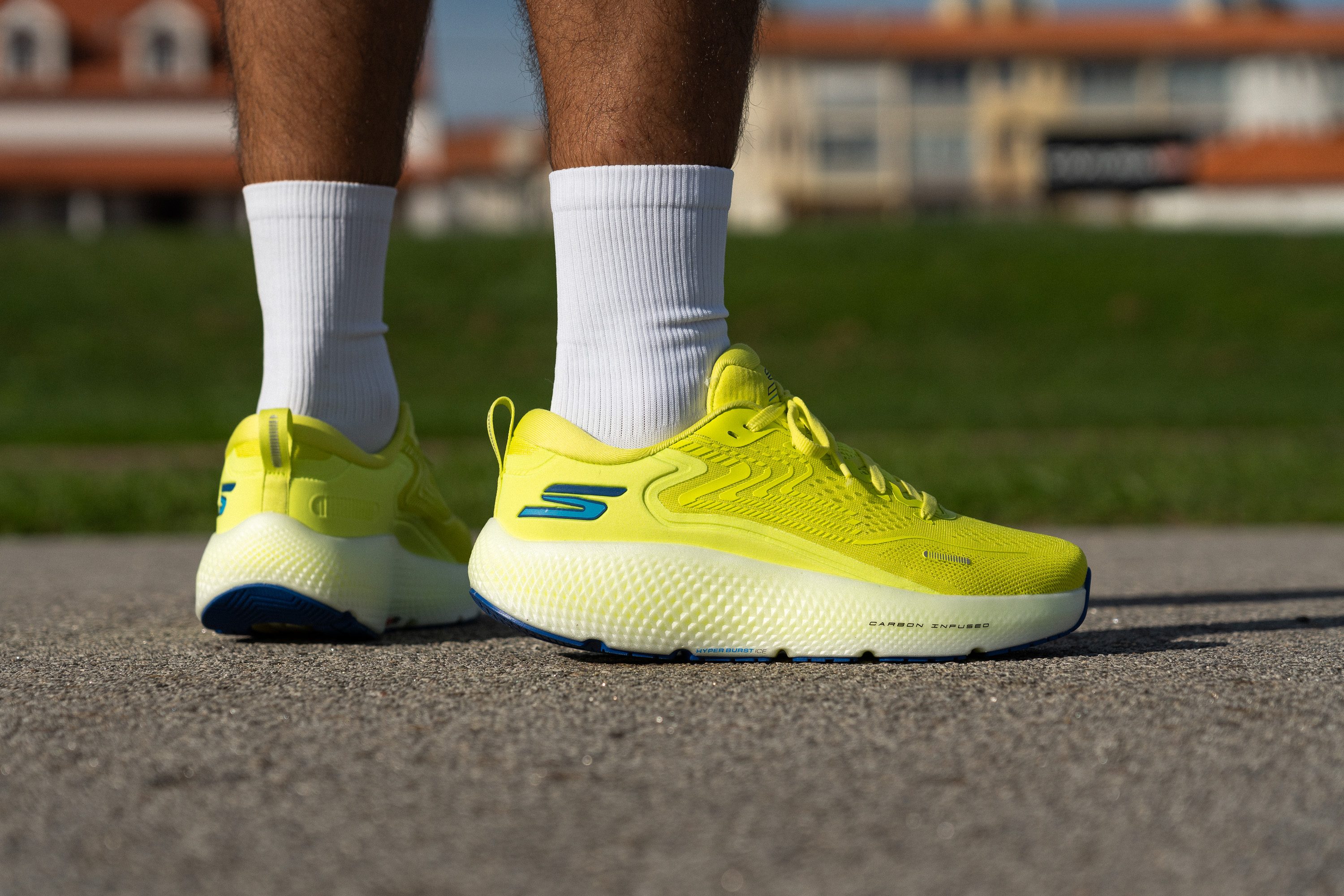
Who should NOT buy
From our perspective, the Skechers GO RUN Max Road 6 is going to feel too heavy for those prioritising a lightweight running experience. In our testing, we found that its substantial weight can overshadow its cushioning benefits for some runners. Those seeking a lighter, high-stack shoe at a similar price point should get the ASICS Novablast 4 or Mizuno Neo Vista, which offer a better balance of comfort and weight.
Additionally, we believe the rockered midsole shape may not appeal to everyone. For those who prefer a flatter, more predictable ride with classic cushioning, the Brooks Ghost Max 2 is a more suitable option for daily training.
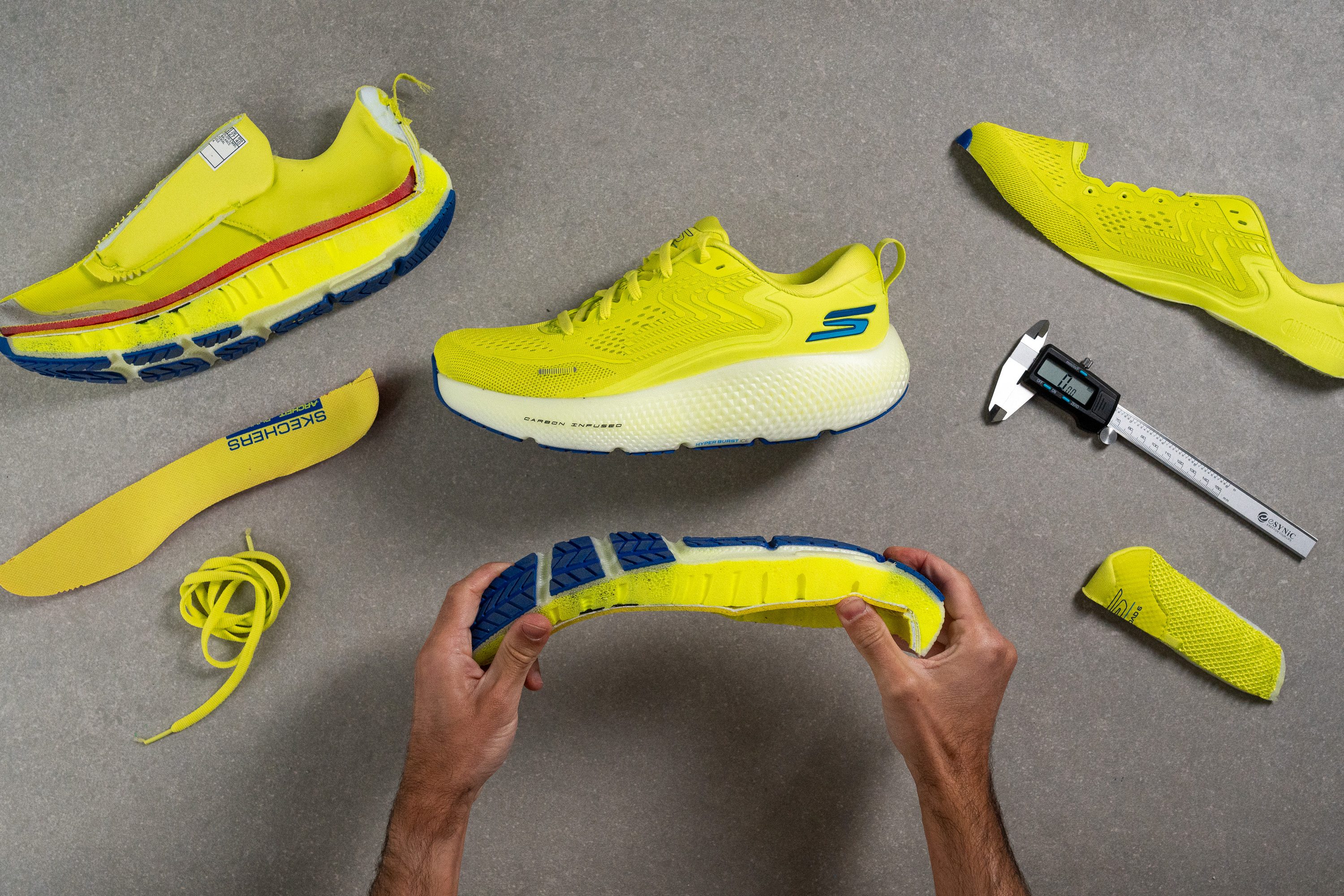
Cushioning
Heel stack
The Skechers GO RUN Max Road 6 features a maximalist name—and a maximalist stack height to match. While it doesn’t quite reach the 40.0 mm threshold at the heel point where we measure all shoes (following World Athletics guidelines), we found that its design easily qualifies it as max-stack. In fact, given the wave-like shape of the midsole, the midfoot area rises higher than 40 mm.
It's clear that this is a running shoe designed for those who prefer maximum cushioning over ground feel. We felt that it excels at absorbing impact, offering awesome joint protection for runners, regardless of whether they strike with the heel or not.
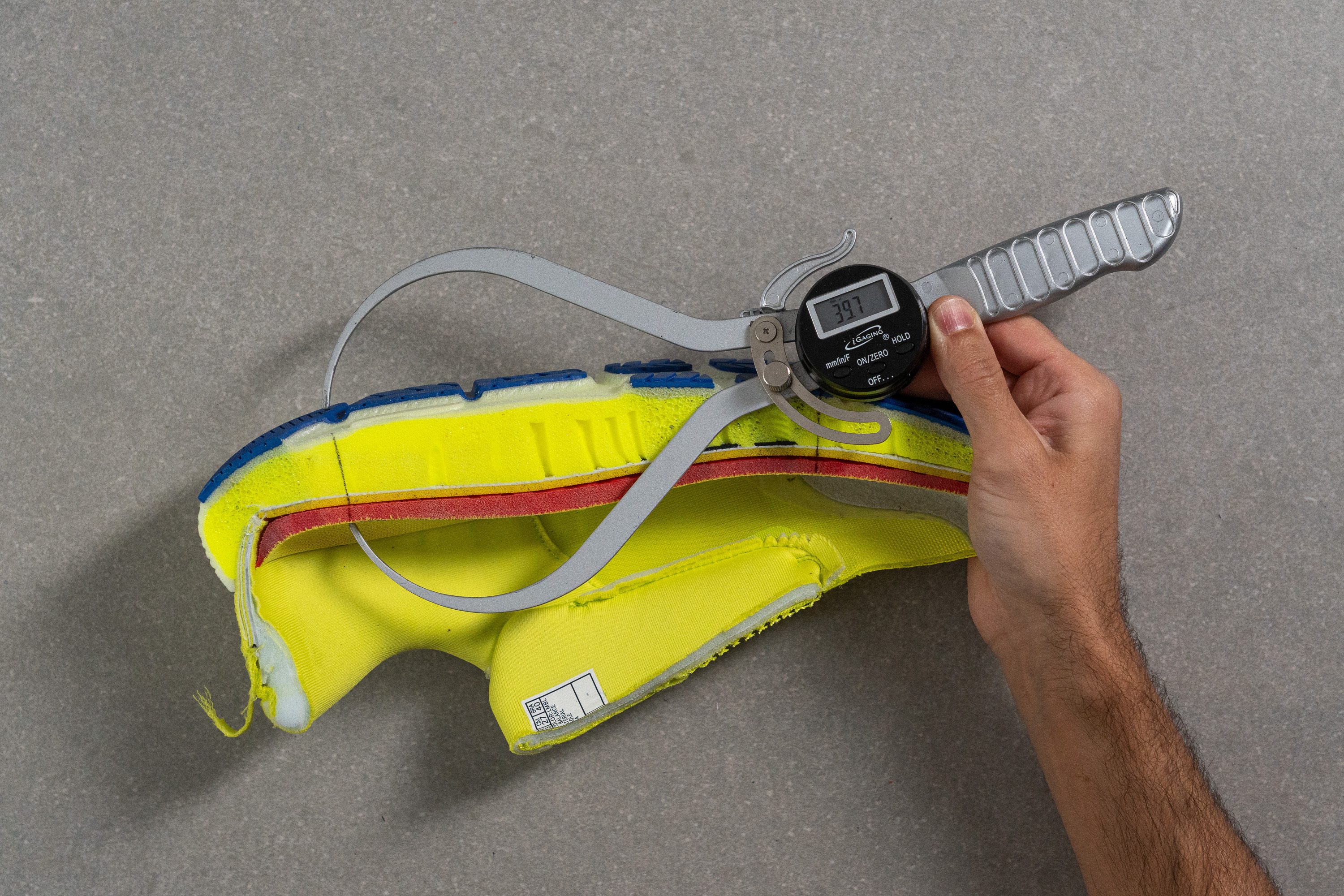
| GO RUN Max Road 6 | 39.7 mm |
| Average | 34.7 mm |
Forefoot stack
The forefoot also exceeds the 30-mm mark, which is uncommon for daily trainers. In our view, this makes it ideal for runners seeking top-tier cushioning and who don’t mind a thicker foam layer underfoot.
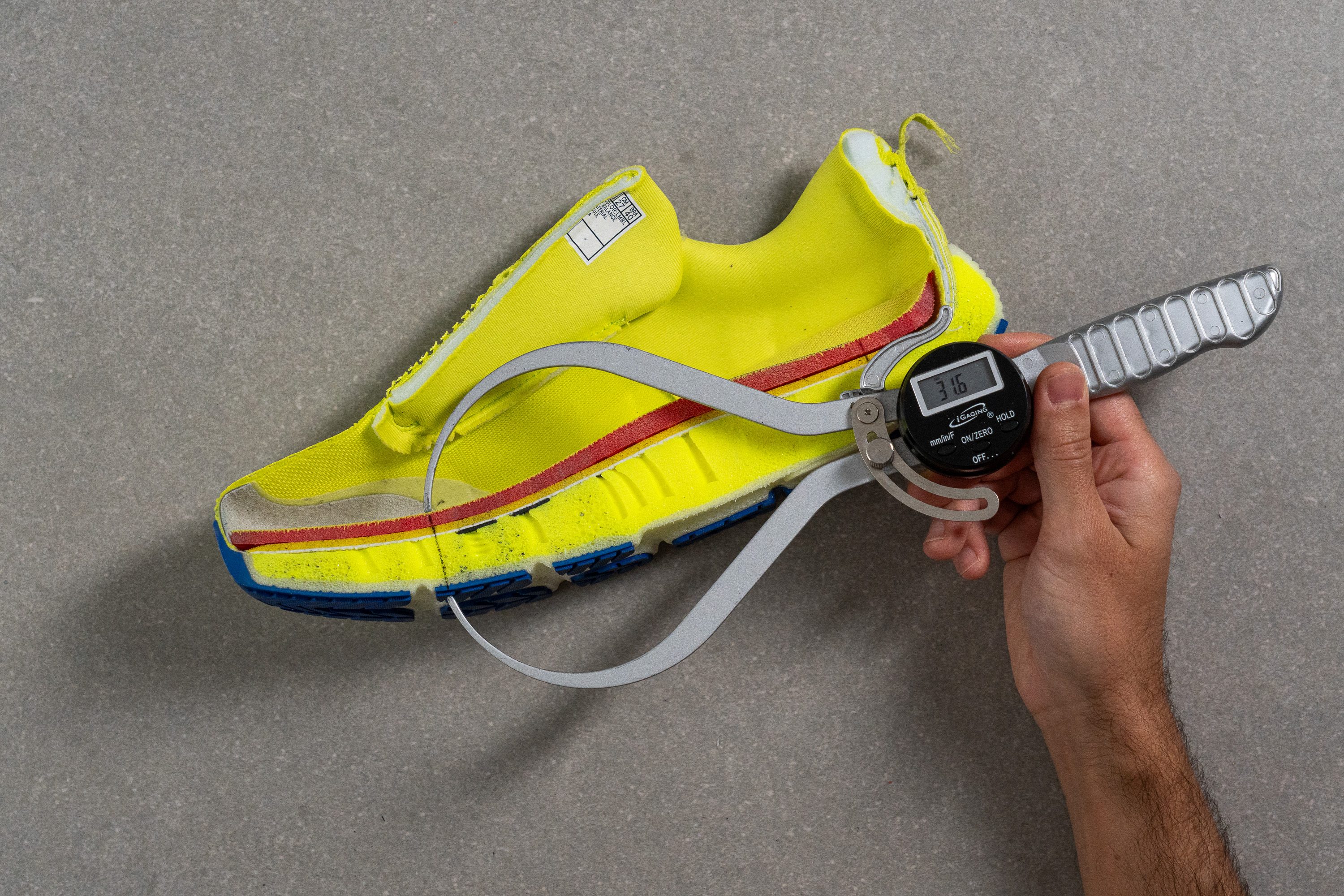
| GO RUN Max Road 6 | 31.6 mm |
| Average | 26.1 mm |
Drop
The actual drop of the shoe measures 8.1 mm, slightly higher than the stated 6 mm. In our view, this is a positive change, as the shoe does a better transition at slower paces, where many runners tend to heel strike.
But this is one of those shoes where the static drop doesn’t fully reflect how it feels. Notice how the heel drops and the midfoot rises? This creates wave-like shape rather than a flat sole, emphasising arch support. So despite the 8.1 mm drop, we believe this shoe performs best for midfoot strikers, while heel strikers will benefit from increased stability and top cushioning.
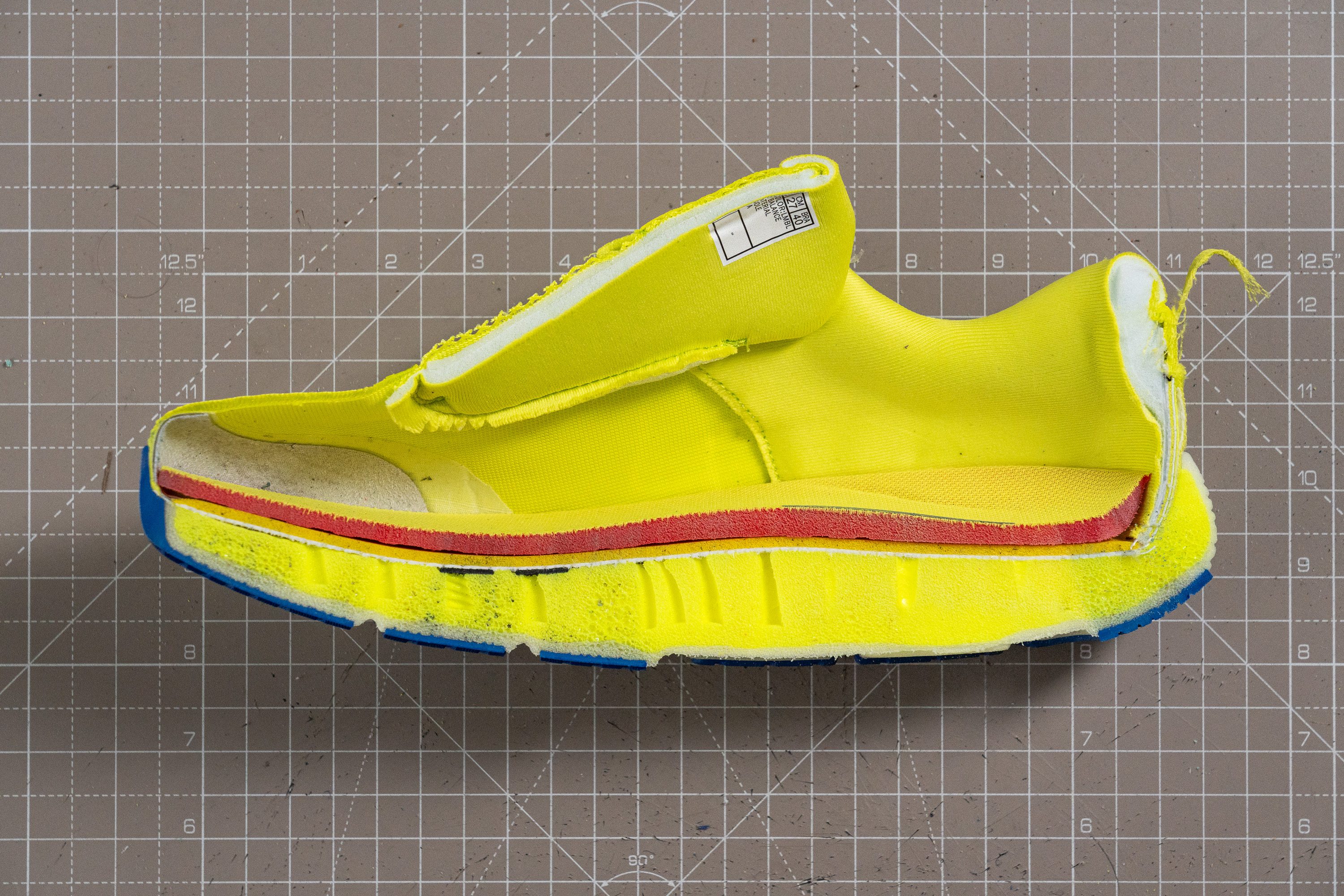
| GO RUN Max Road 6 | 8.1 mm |
| Average | 8.6 mm |
Midsole softness
The Max Road 6 features HyperBurst ICE foam, Skechers' latest advancement in training foams. It’s essentially an evolution of HyperBurst—slightly bouncier and lighter—while maintaining the same supercritical CO2 manufacturing process.
In our experience, while nitrogen-infused midsoles from all other brands perform well, there’s something uniquely balanced about CO2-infused foams. They offer a very good blend of softness (19.8 HA), comfort, and responsiveness, making them ideal for easy runs. However, energy return remains limited since it’s made from EVA, and miracles still don’t happen in running shoes.

It's worth noting that Skechers patented the CO2 injection process after its invention, which is fair, but it means other brands stick to nitrogen to avoid licencing fees, as we’ve detailed in our guide about foams. For this reason, if you’re a fan of CO2-infused foams, Skechers is your only option.
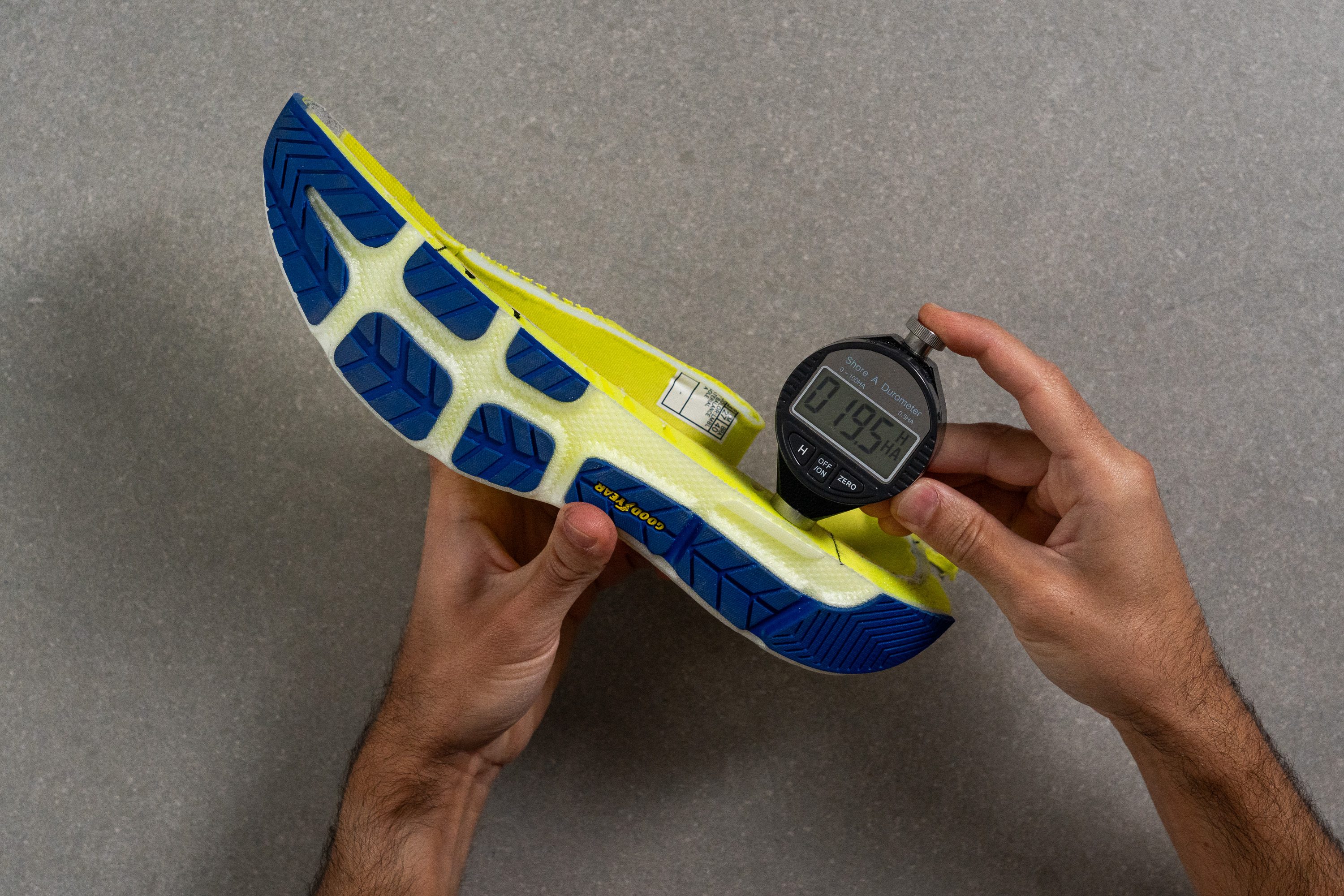
| GO RUN Max Road 6 | 19.8 HA |
| Average | 20.4 HA |
Rocker
The Skechers GO RUN Max Road 6 features a Hyper Arc rocker, in our view, is ideal for maximalist daily trainers, particularly those catering to heel strikers and easy paces.
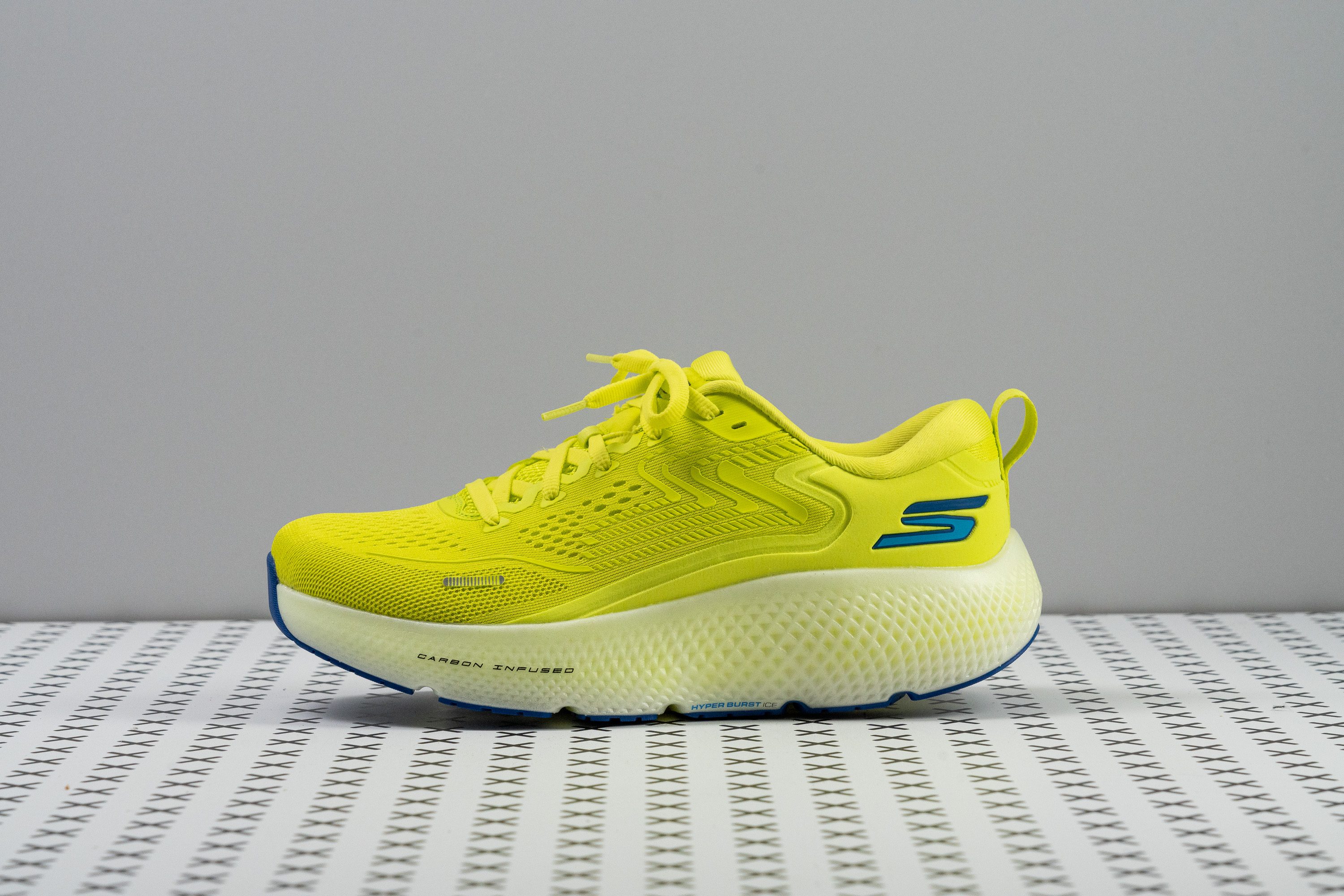
Looking closely at the picture above, you’ll notice its clearly curved design, which promotes a smooth heel-to-toe transition. However, the toe spring is quite low—when we measured it, we were surprised to find it rises only 4 cm. That’s significantly less than other maximalist running shoes but suits a model designed for easy-paced runs rather than speed.
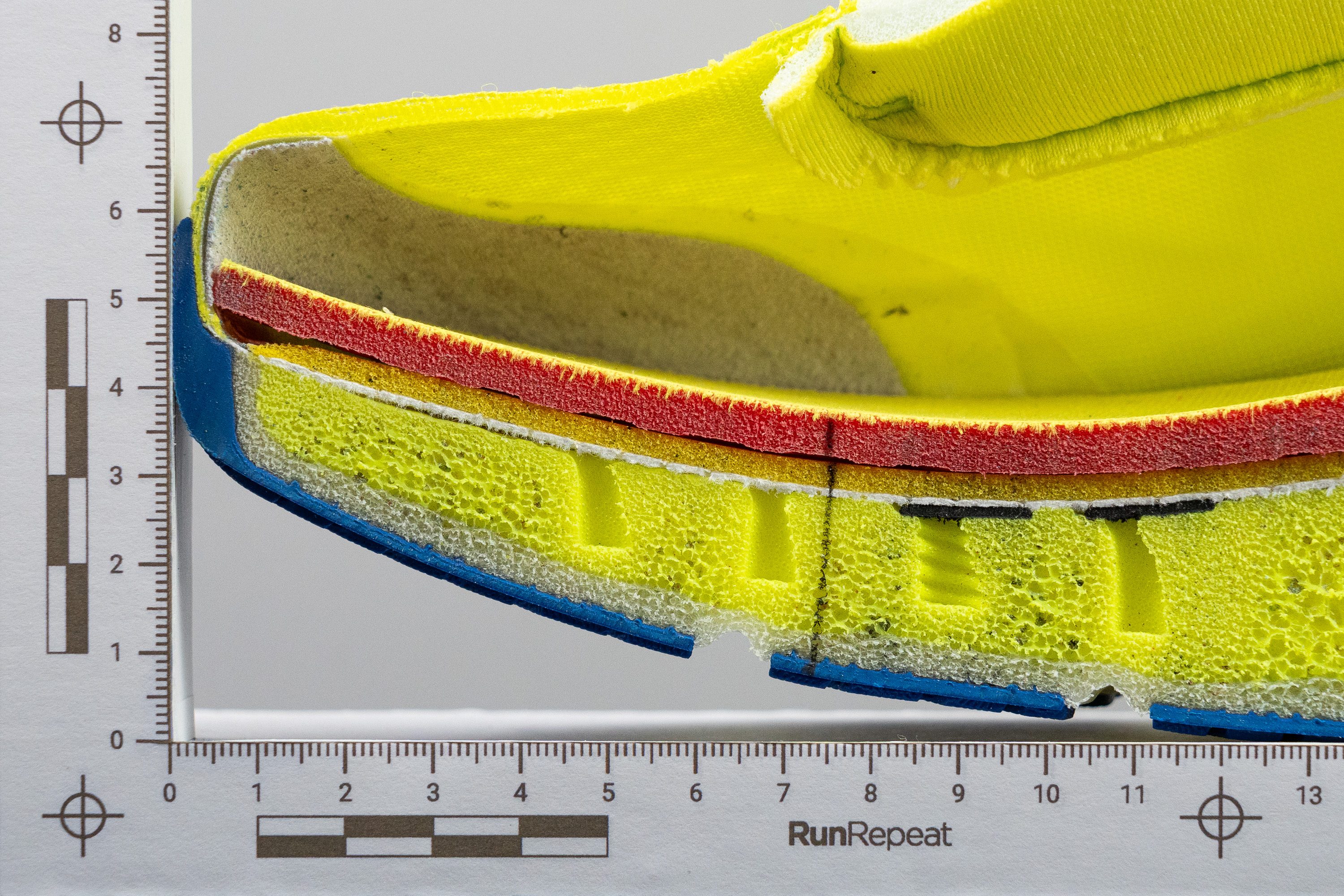
Plate
One of the coolest features of the Skechers GO RUN Max Road 6 is the H-shaped carbon-infused plate, positioned over the midfoot and forefoot, serving purely as a stability element to counter the maximalist stack height of the shoe.
Forget the stiffness and propulsion of carbon plates in competition shoes—that’s not the case here.

Size and fit
Size
Skechers GO RUN Max Road 6 fits true to size (38 votes).
Width / Fit
The Max Road 6 features an average width (95.9 mm) at the broadest part in the standard size D we tested.
And that's the only one, because despite being a daily trainer, Skechers doesn’t offer extra widths, making it a take-it-or-leave-it fit.

| GO RUN Max Road 6 | 95.9 mm |
| Average | 95.1 mm |
Toebox width
We also discovered that the Max Road 6 tapers quite a bit, narrowing to 70.3 mm. That means it doesn’t provide unlimited toe splay either like you'd find in an Altra shoe, more like the opposite, being ideal for those expecting a snug fit or individuals with narrow feet.

| GO RUN Max Road 6 | 70.3 mm |
| Average | 73.3 mm |
Toebox height
Height-wise, the toebox of the Max Road 6 offers ample vertical clearance at 27.6 mm, ensuring no discomfort or restrictions.

| GO RUN Max Road 6 | 27.6 mm |
| Average | 27.0 mm |
Flexibility / Stiffness
This shoe features a carbon-infused plate, but the H-shaped design ensures it adds minimal stiffness. Using our 90-degree bend test, we confirmed that the plate is purely for stability.
We pushed our force gauge and measured 29.3N, which, while around the average, is impressively flexible considering the Max Road’s massive stack height.
This test follows an older methodology, which is why you don't see recently tested shoes in the chart. Results from different methodologies can not be compared.
| GO RUN Max Road 6 | 29.3N |
| Average | 28.1N |
Weight
At 11.25oz or 319g, we found the weight of the GO RUN Max Road 6 really noticeable underfoot and wished it could be lighter. While it’s manageable for easy or recovery runs, it becomes increasingly evident when you try to pick up the pace.
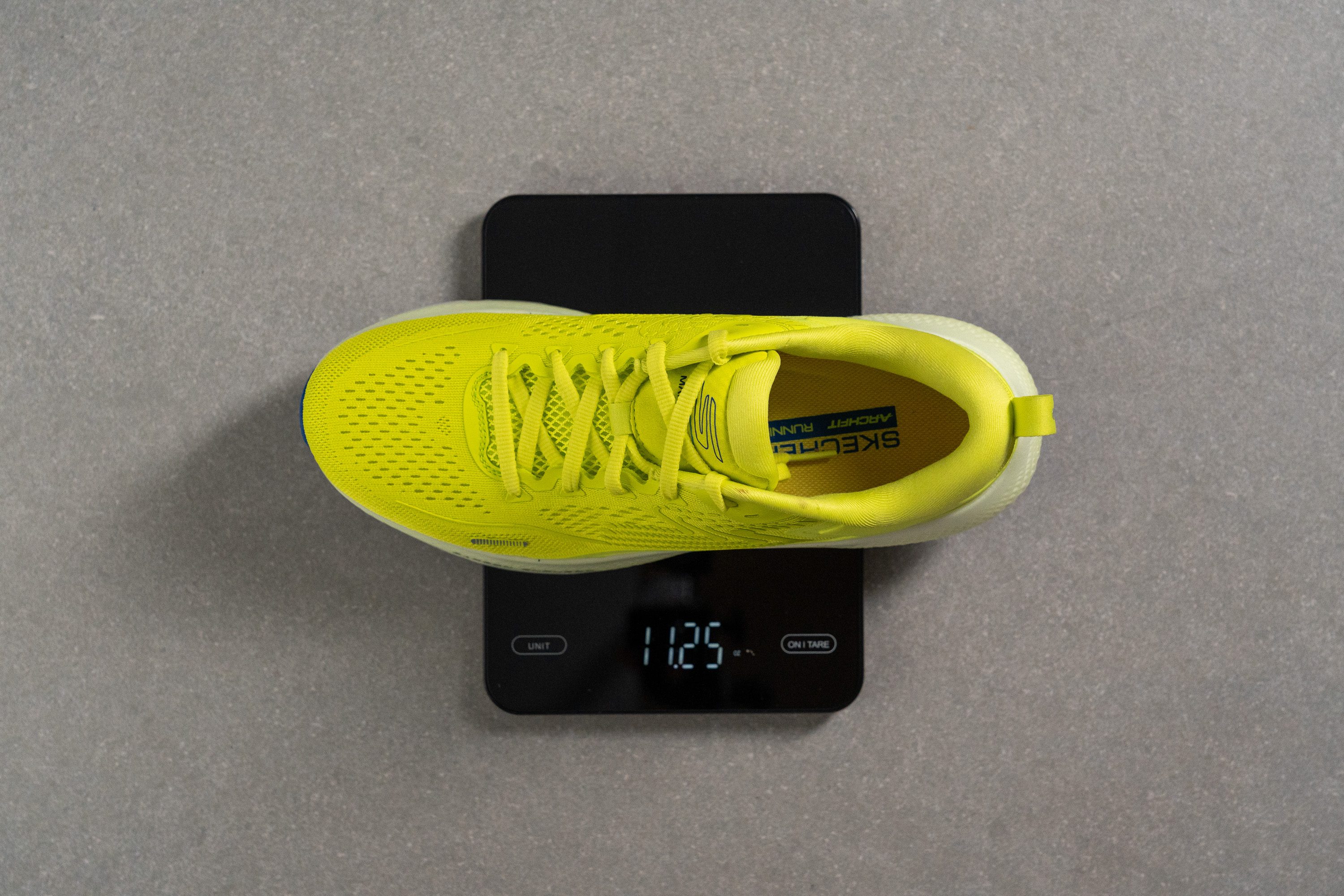
| GO RUN Max Road 6 | 11.3 oz (319g) |
| Average | 9.3 oz (264g) |
Breathability
The upper focuses on maximum comfort with generous padding, which slightly impacts breathability despite the numerous ventilation holes we observed in the toebox and midfoot areas.
After conducting our smoke test, we gave it a 4/5 score. We believe this upper excels in mild climates and can handle a range of temperatures when paired with appropriate socks, ensuring optimal comfort and functionality.
Using our LED light, we analysed the engineered mesh in detail. The toebox prioritises ventilation, while the midfoot becomes slightly thicker for added support. From the arch to the heel, the structure shifts to a stability-focused design.

To examine the material up close, we used our microscope.

We discovered a high-quality mesh similar to those from leading brands, with precisely crafted openings that reveal a secondary layer beneath the main one.
But if one aspect stands out most, it’s the luxurious comfort. Skechers opted to add some extra weight to enhance this feature, despite the shoe already being heavy. For runners who appreciate a padded, comfort-focused upper, this one works beautifully. Oh, and as a bonus, Skechers highlights that this shoe is machine washable!
| GO RUN Max Road 6 | 4 |
| Average | 3.7 |
Stability
Lateral stability test
We have no doubts about the categorization of the Max Road 6—it’s a neutral daily trainer. However, it includes some stability-focused features designed to counter the high-stack build, such as raised midsole sidewalls, the ArchFit footbed, and the H-shaped carbon-infused plate.
Torsional rigidity
We found a surprising 3/5 score in the torsional rigidity test, which was unexpected given the max-stack design and the plate above the midsole. In our experience, most maximalist shoes are too rigid and less comfortable at easy paces, but Skechers seems to have designed this shoe with a slow-pace-friendly, comfort-focused build. And we really like it.
| GO RUN Max Road 6 | 3 |
| Average | 3.5 |
Heel counter stiffness
The heel counter feels similar to an average daily trainer, with a flexible cardboard insert inside the upper that earned a 3/5 score during our evaluation.
| GO RUN Max Road 6 | 3 |
| Average | 2.9 |
Midsole width - forefoot
The shoe appears larger at first glance, and in our experience, it feels that way while running too. However, this is mainly due to its high-stack design. When we checked it with digital calipers, we discovered that its dimensions are fairly standard at 113.8 mm—comparable to an average daily trainer like the Adidas Supernova Rise—despite its visually oversized profile.
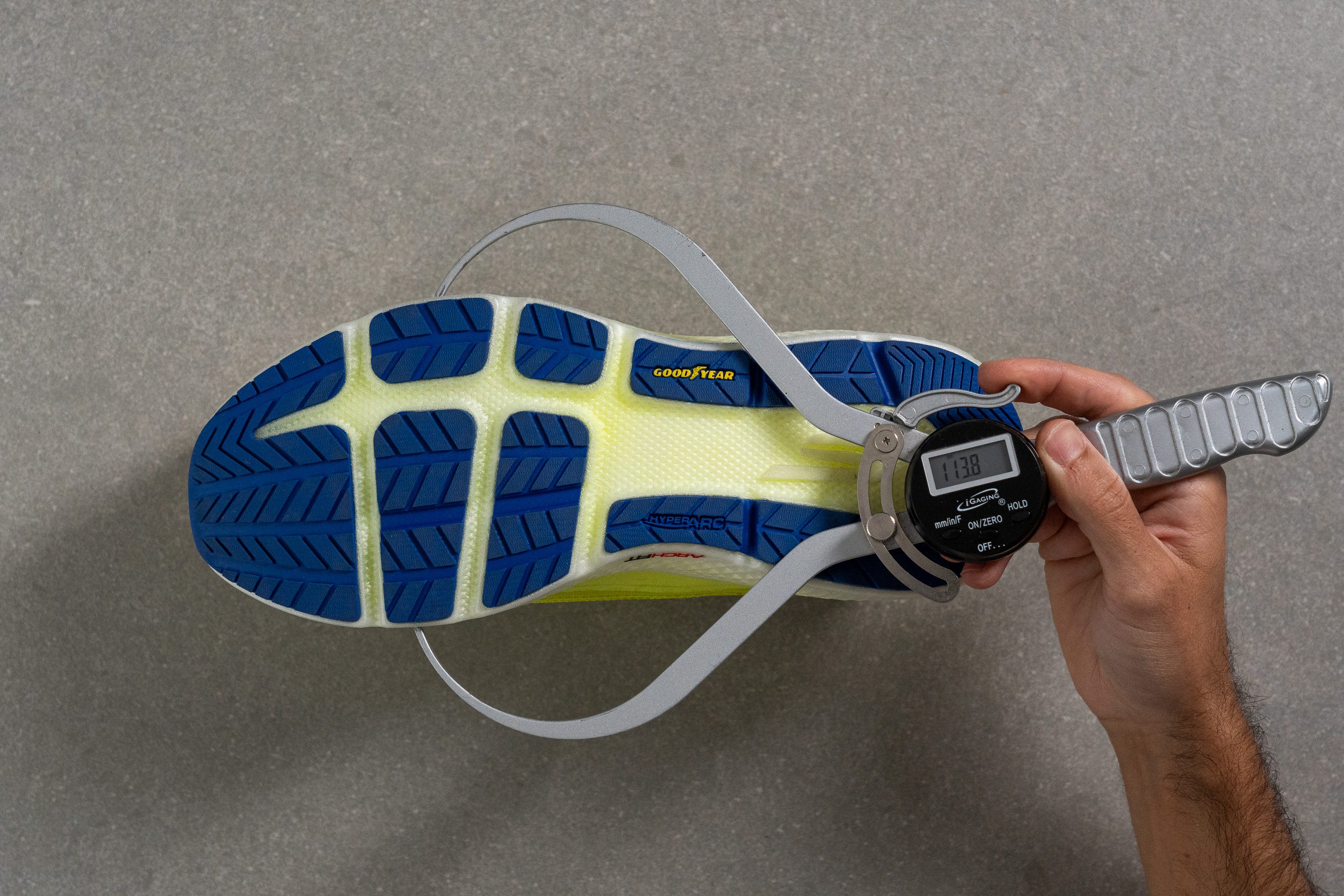
| GO RUN Max Road 6 | 113.8 mm |
| Average | 114.3 mm |
Midsole width - heel
The heel adds to the perception that the shoe feels larger overall. But it doesn’t just feel broader in this area—it actually is. We measured it at 93.8 mm.
It's clear to us that Skechers designed a heel that’s comparatively wider than the forefoot to align with the shoe’s heel-focused geometry. We believe this design, combined with its rockered shape, makes it particularly well-suited for rearfoot and midfoot strikers, offering a more supportive platform for those landing patterns.
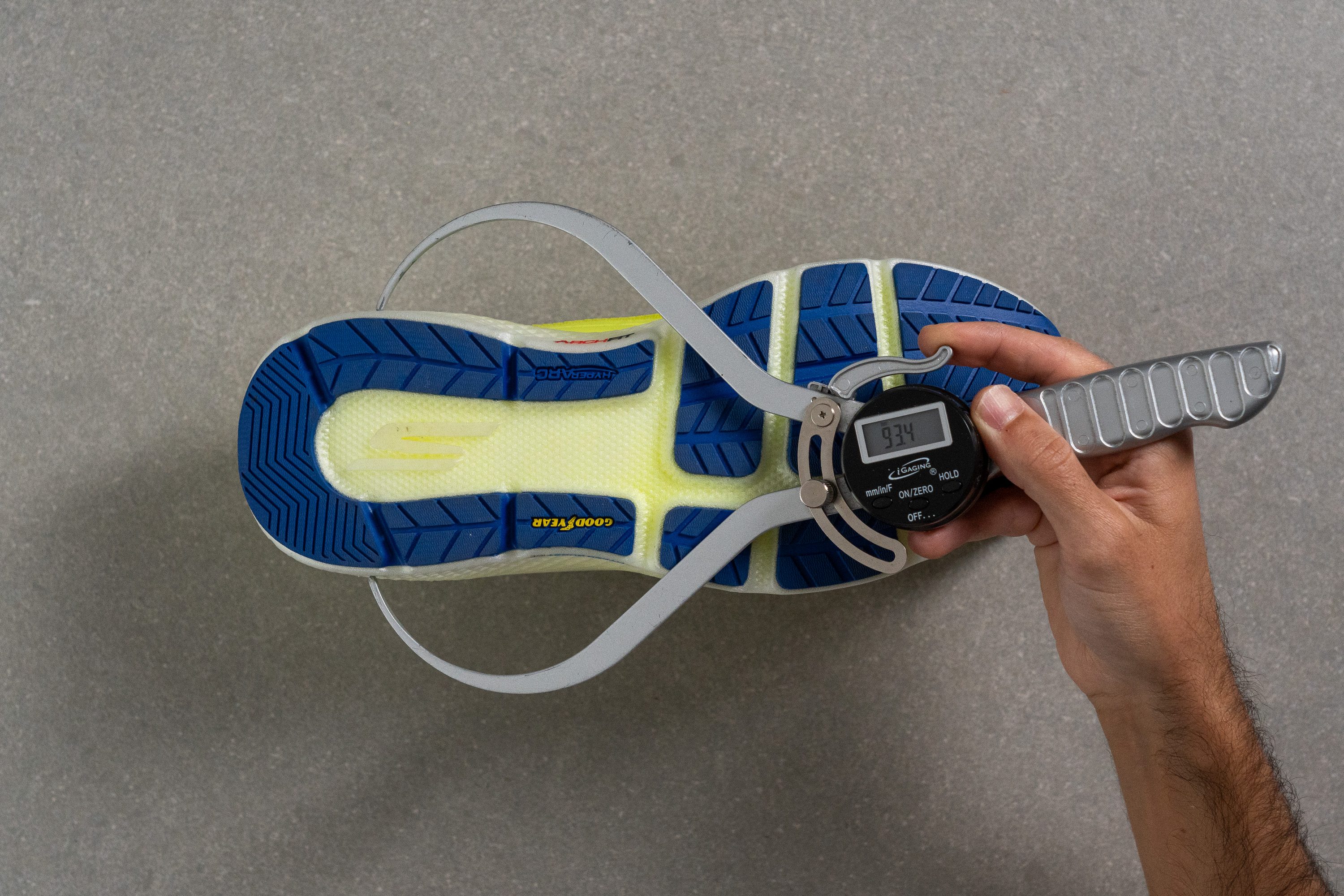
| GO RUN Max Road 6 | 93.8 mm |
| Average | 90.7 mm |
Durability
Toebox durability
Engineered mesh uppers with large ventilation holes often underperform in our Dremel test, but this one features a thick, dual-layer design—so we believe it should have delivered a stronger performance than 2/5.
| GO RUN Max Road 6 | 2 |
| Average | 2.6 |
Heel padding durability
On the bright side, the heel padding performed exceptionally well, despite being thick and soft—a combination that often leads to quicker wear. We were thrilled to award it a 5/5, confirming that runners prone to heel wear will appreciate the Max Road 6 for its impressive durability and comfort.
| GO RUN Max Road 6 | 5 |
| Average | 3.4 |
Outsole hardness
Turning to the outsole, we began by testing the hardness of the Goodyear rubber with our durometer, which measured 75.3 HC—a slightly softer-than-average reading. In our experience, this isn’t concerning, given Goodyear’s reputation.
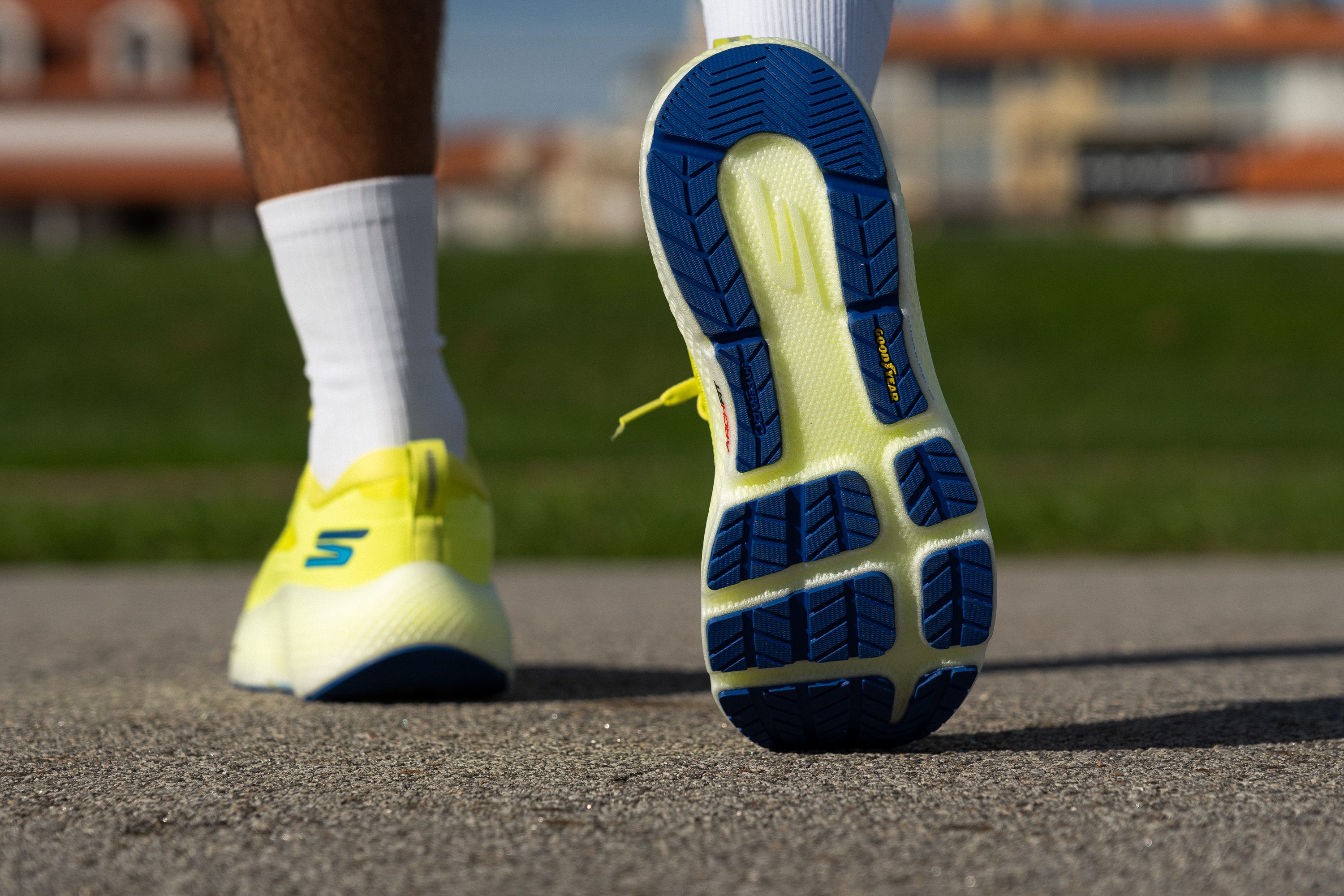
The rubber coverage is well-designed, with Skechers clearly prioritising longevity over weight reduction. While Goodyear rubber may still rank just below Continental in running shoes, we found its performance to be outstanding, especially in wet conditions.
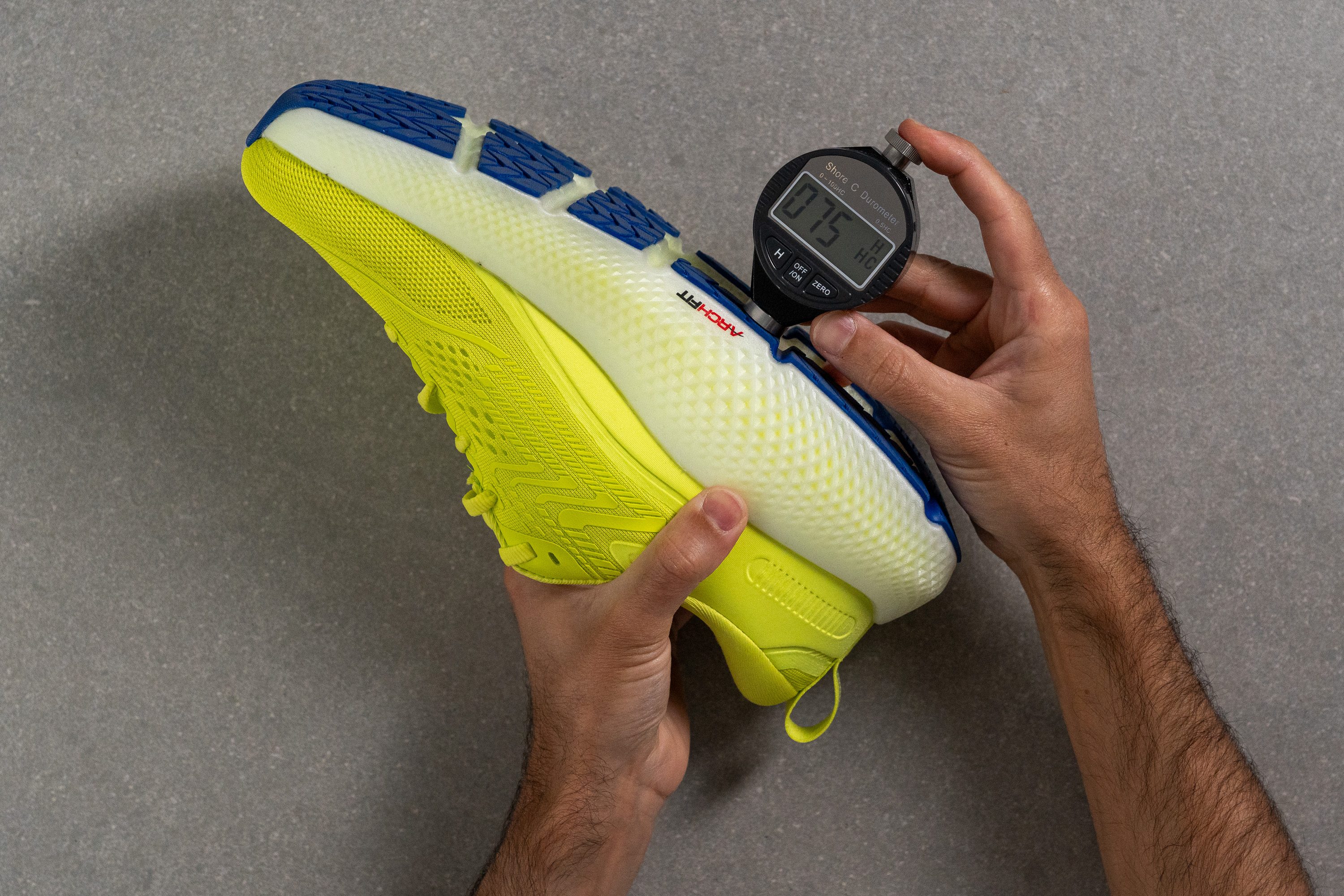
| GO RUN Max Road 6 | 75.3 HC |
| Average | 79.2 HC |
Outsole durability
Our final Dremel test focused on the outsole, and expectations were high. The results, while not exceptional, met them well—just 0.7 mm of indentation, outperforming most daily trainers and proving suitable for various surfaces.
| GO RUN Max Road 6 | 0.7 mm |
| Average | 1.1 mm |
Outsole thickness
The thickness measured 2.9 mm, which we found reasonable. However, considering the shoe’s high weight and the proven durability of its outsole, we believe slightly less rubber could be a good design adjustment.
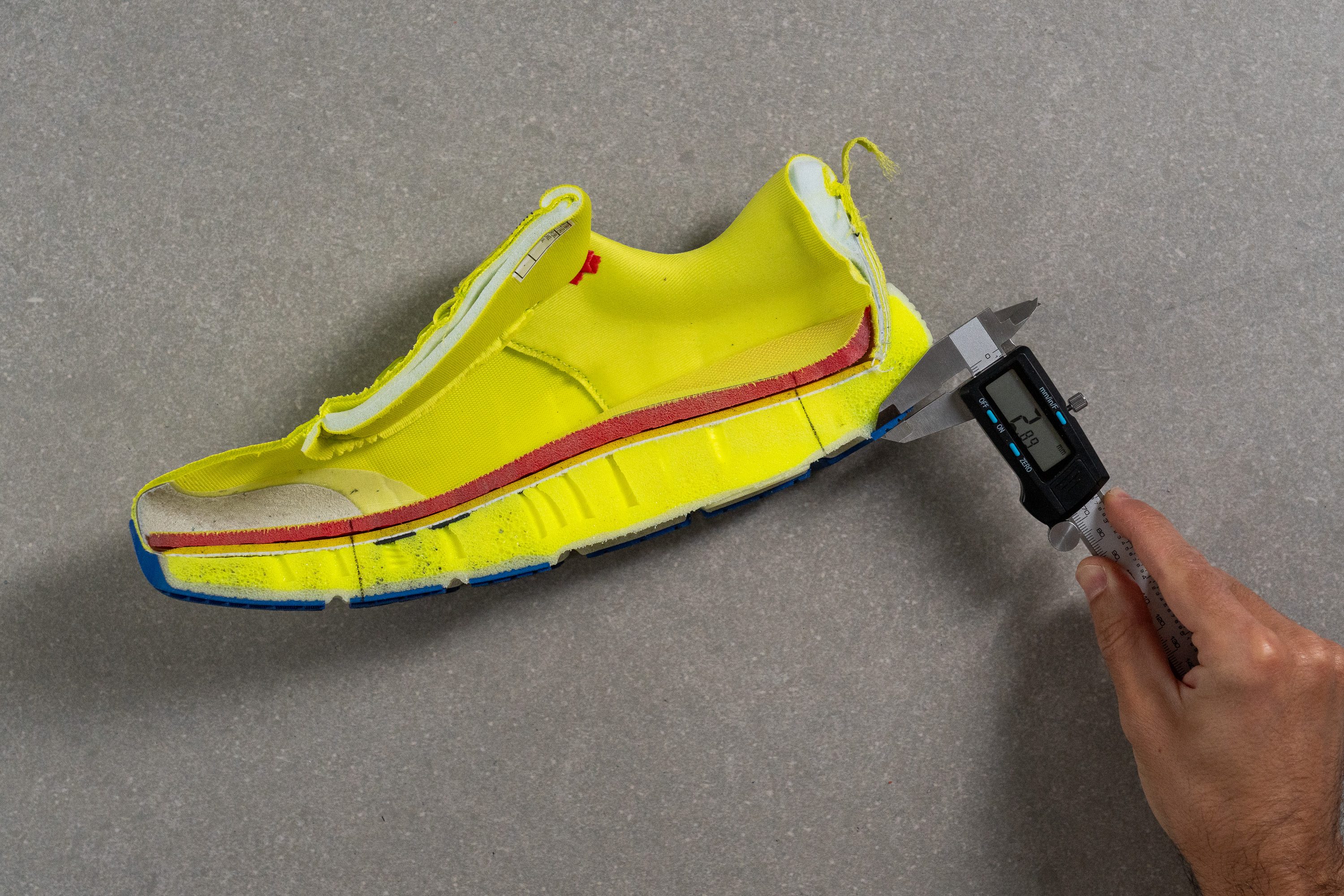
| GO RUN Max Road 6 | 2.9 mm |
| Average | 3.2 mm |
Misc
Insole thickness
The "Max" moniker of this shoe extends to its 5.3-mm ArchFit insole, which is significantly thicker than those from other brands.
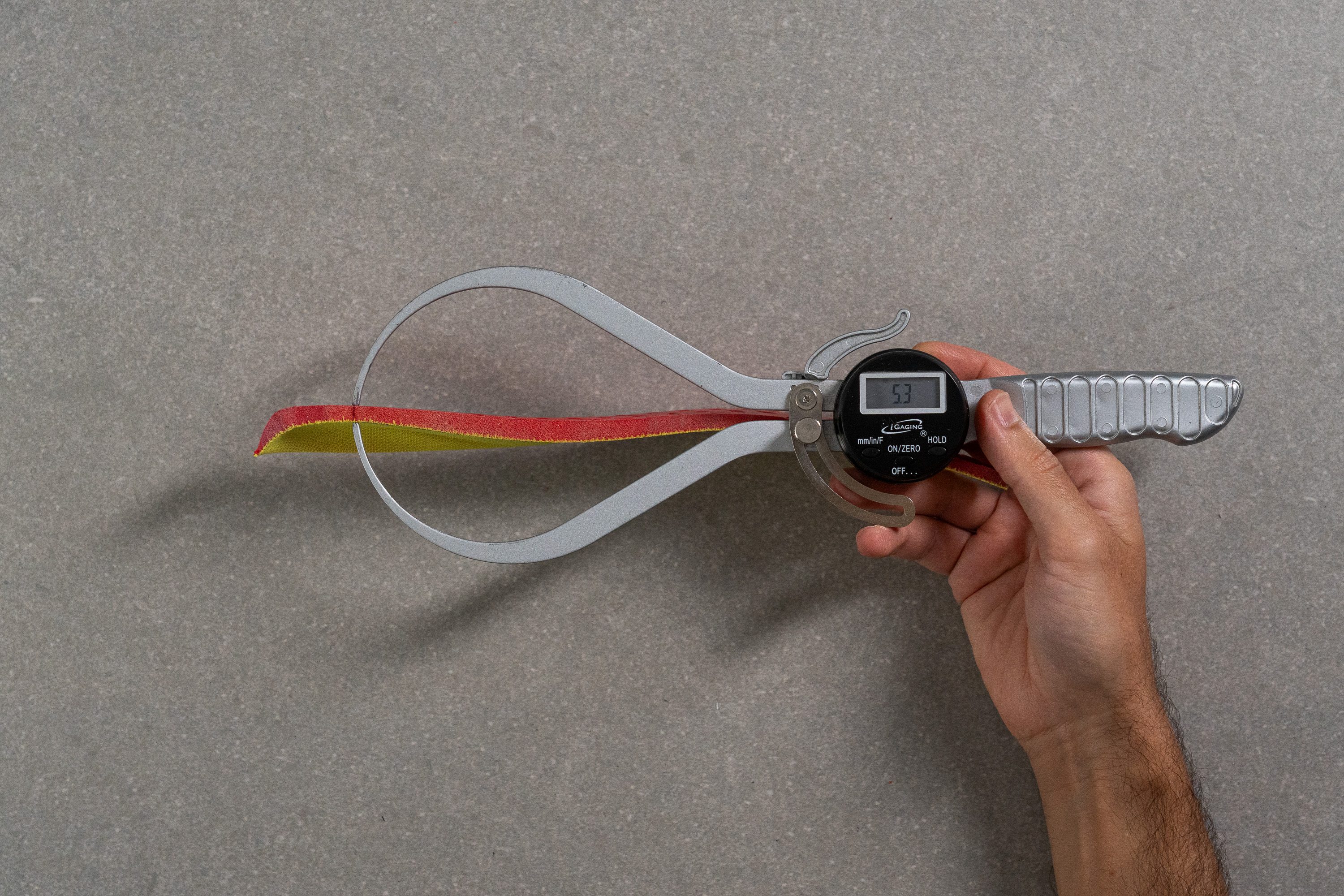
| GO RUN Max Road 6 | 5.3 mm |
| Average | 4.5 mm |
Removable insole
Removing the insole was easy, revealing a cool engraved quote we fully agree with: "Listen to the athlete".
Replacing it with a third-party footbed means sacrificing the Skechers ArchFit support system and its benefits... or potential downsides, as many runners find the arch support from this footbed overly intrusive and uncomfortable.

| GO RUN Max Road 6 | Yes |
Midsole softness in cold (%)
Creating foam through a supercritical CO2 injection process offers many benefits, but it doesn’t improve EVA’s performance in cold temperatures. That’s why we weren't surprised to get a 46.8% increase in our Shore A durometer after the Max Road 6 spent 20 minutes in the freezer.
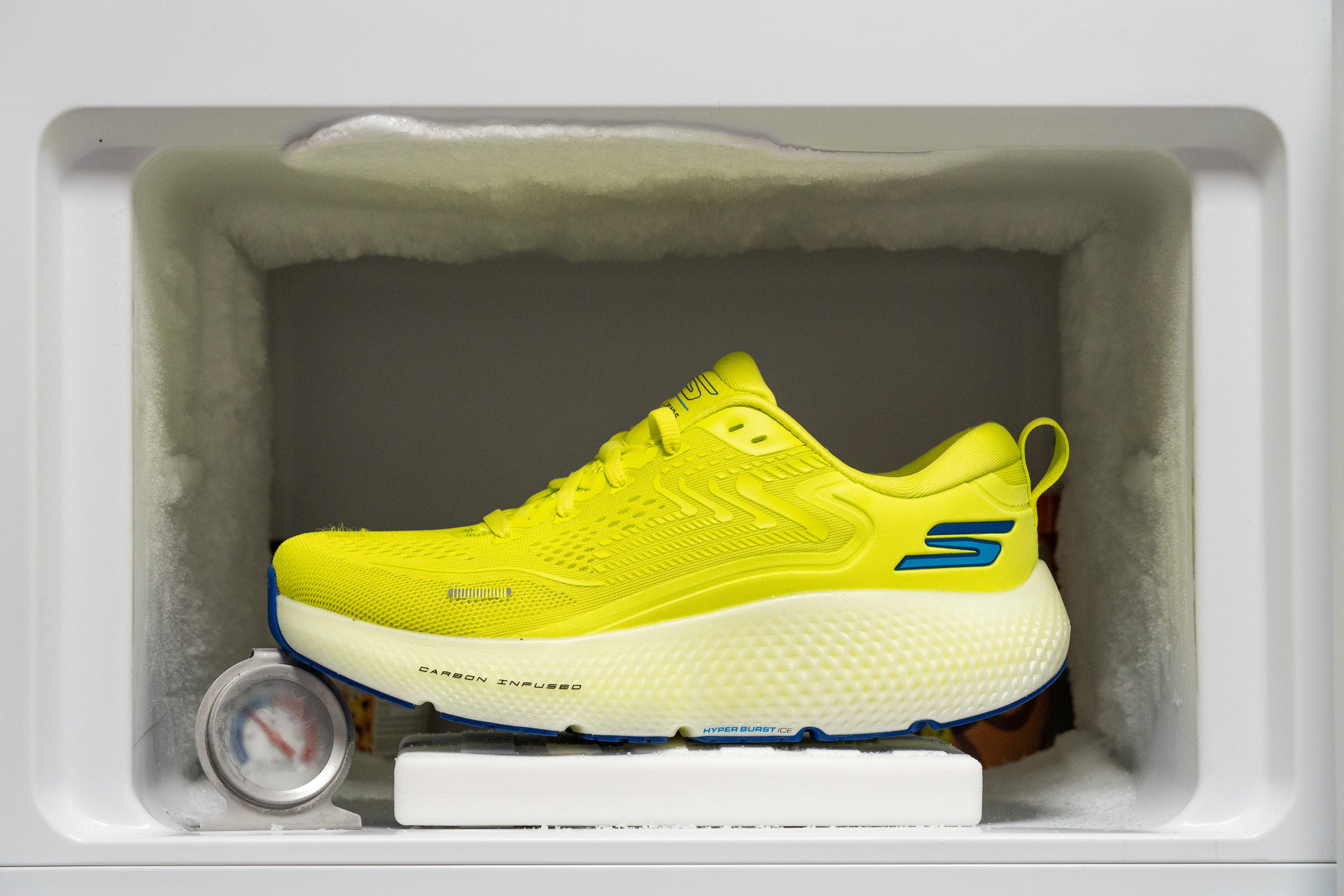
| GO RUN Max Road 6 | 47% |
| Average | 24% |
Reflective elements
We know that brands aiming to keep costs low in affordable running shoes often skip small, easily overlooked details. However, Skechers doesn’t fall into that category—we unexpectedly discovered some reflective elements!
| GO RUN Max Road 6 | Yes |
Tongue padding
The Max Road 6 boasts a comfortable tongue that folds neatly at the top, making it easy to grip when adjusting the fit. This premium-level detail enhances usability. Anyway, in our experience, the tongue’s length is just right, requiring minimal adjustments during wear.

The tongue’s thickness—measuring 8.0 mm—adds to the overall comfort, offering excellent protection for the instep. According to our testing, this well-padded design delivers great cushioning and ensures a pressure-free experience, even during over-15-mile long runs.
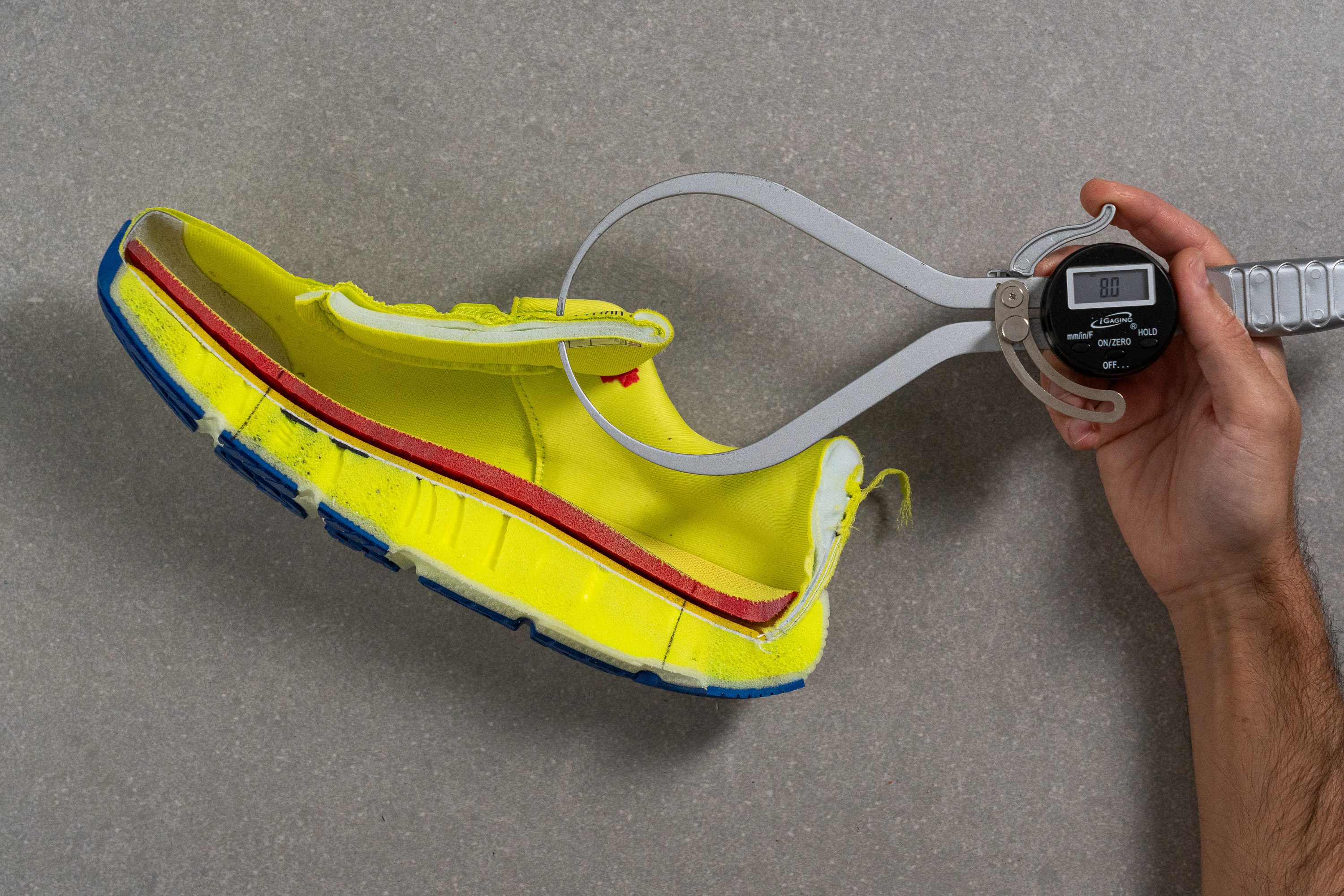
| GO RUN Max Road 6 | 8.0 mm |
| Average | 5.8 mm |
Tongue: gusset type
The tongue isn’t sewed to the sides, though it does have a central loop that provides some help in keeping it in place—but it’s far from a proper substitute. We think this is an area where Skechers could improve this model moving forward.

| GO RUN Max Road 6 | None |
Price
The Max Road 6 boasts interesting features, but the main one is undoubtedly its low price. In fact, it's one of the most affordable maximalist shoes right now, offering one of the best price-per-cushioning ratios we’ve ever seen.
| GO RUN Max Road 6 | $145 |
Heel tab
The heel includes a convenient finger-loop heel tab, showing that despite the low price, Skechers hasn’t skimped on the details!
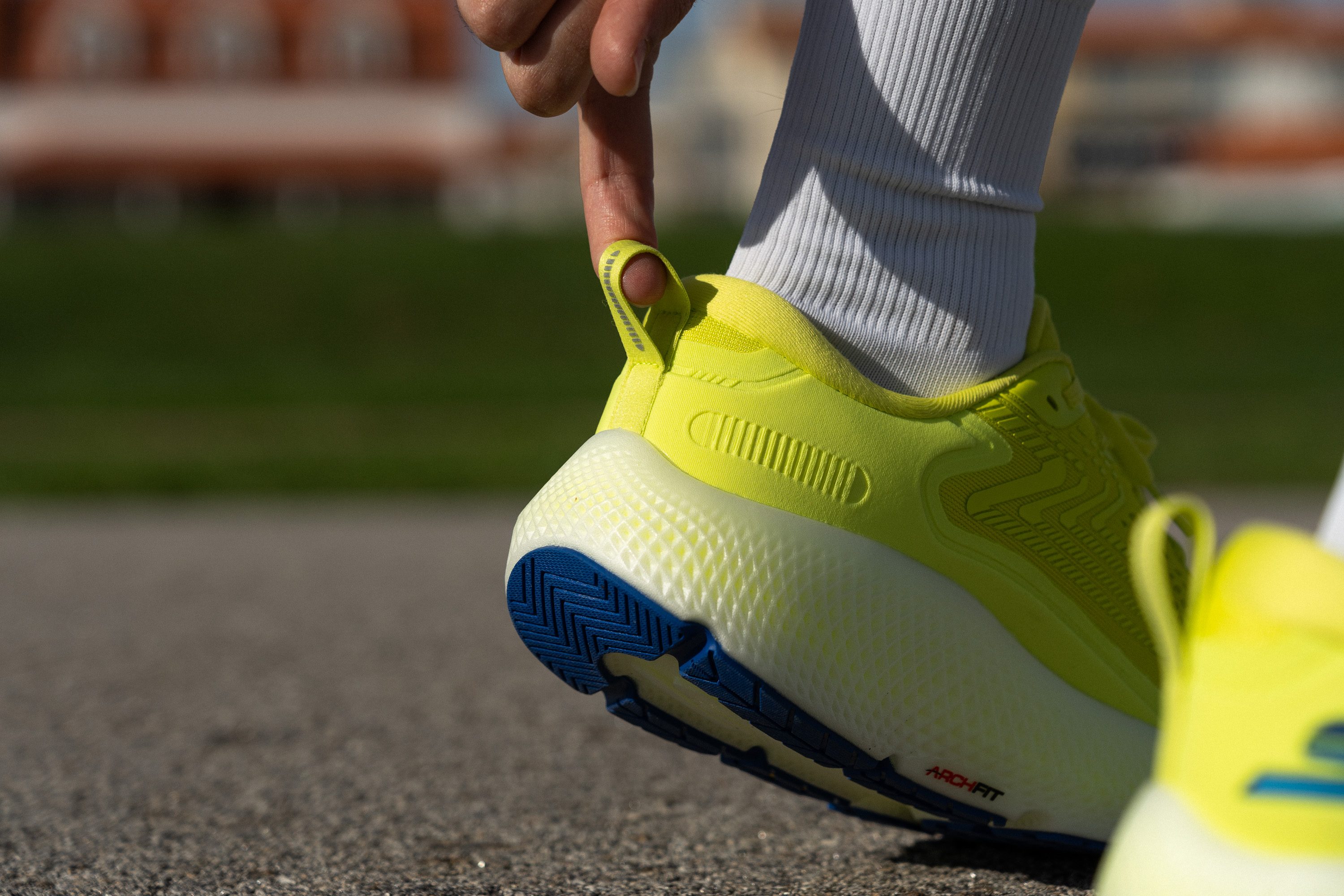
| GO RUN Max Road 6 | Finger loop |

